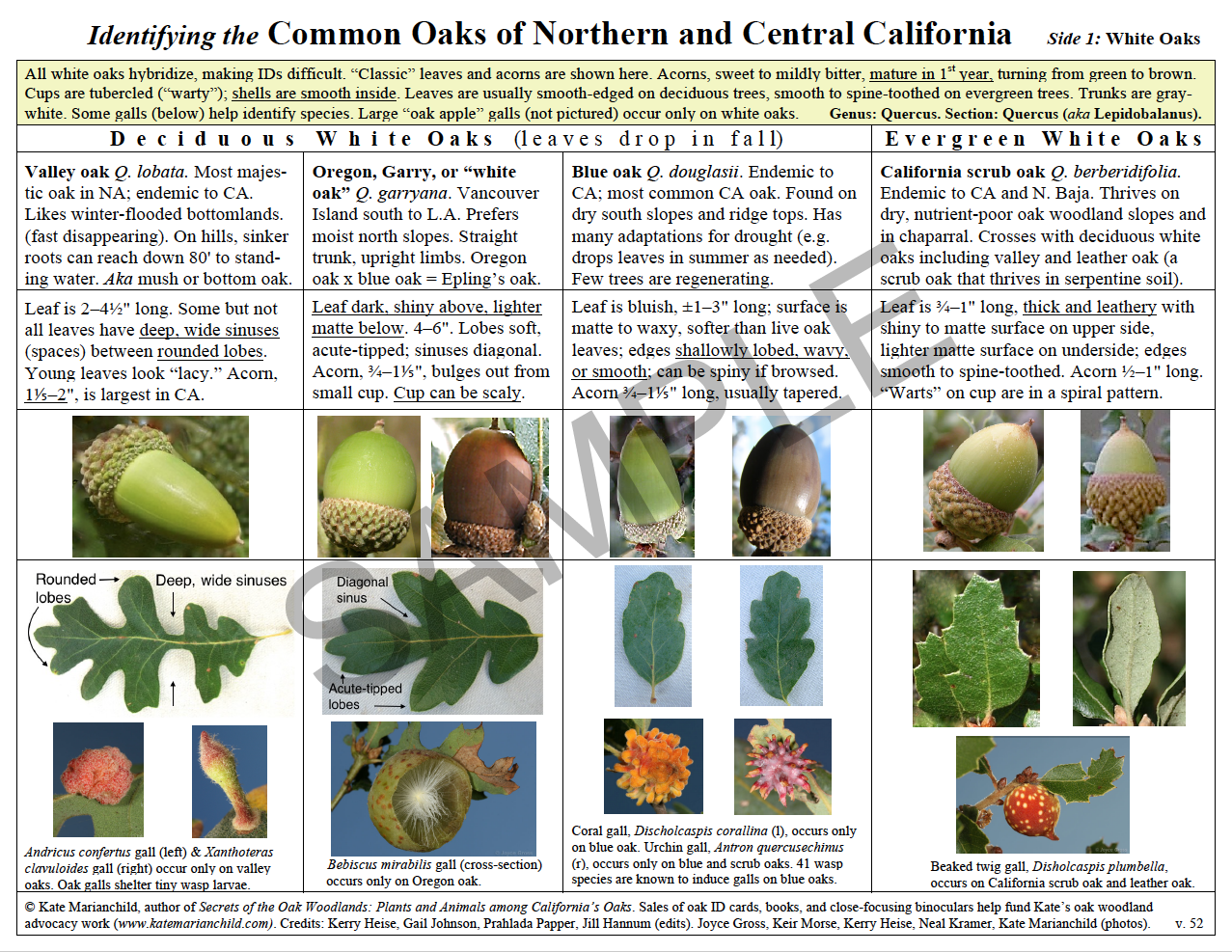This guide will help you learn the names and characteristics of eight oak species common to northern and central California. Soon you will start noticing which birds and butterflies associate with each oak, when each oak species flowers or leafs out, when it drops its leaves, and more. You’ll be able to walk along looking at the ground and know, without even thinking about it, which oak is overhead!
Full color, laminated, 2-sided, 8.5 x 11. $7.50 each x 3 (minimum order) = $22.50. Don’t worry, they make great gifts!
For larger orders and bulk discounts, email kate@katemarianchild.com or call 707-621-5013.
![]()

![]() Note: When oaks have hybridized, it can be very difficult to recognize them by their leaves, which often have characteristics of more than one species. So when you can’t identify an oak by its leaves, look for an acorn cup (aka cap or cupule). They often persist on the ground long after the acorns have been spirited away. The next best strategy is to look at the acorn itself. If you can’t find cups or acorns, look for galls. There are a few gall wasp species that lay their eggs only on one oak species. Hint: if you see any of the large “oak apple galls” –– the ones that look like green apples in the spring and baked potatoes in the fall or winter (not shown in the guide)––you can be sure you are looking at one of the white oaks. (For more on galls and gall wasps, see the gall chapter in my book).
Note: When oaks have hybridized, it can be very difficult to recognize them by their leaves, which often have characteristics of more than one species. So when you can’t identify an oak by its leaves, look for an acorn cup (aka cap or cupule). They often persist on the ground long after the acorns have been spirited away. The next best strategy is to look at the acorn itself. If you can’t find cups or acorns, look for galls. There are a few gall wasp species that lay their eggs only on one oak species. Hint: if you see any of the large “oak apple galls” –– the ones that look like green apples in the spring and baked potatoes in the fall or winter (not shown in the guide)––you can be sure you are looking at one of the white oaks. (For more on galls and gall wasps, see the gall chapter in my book).
